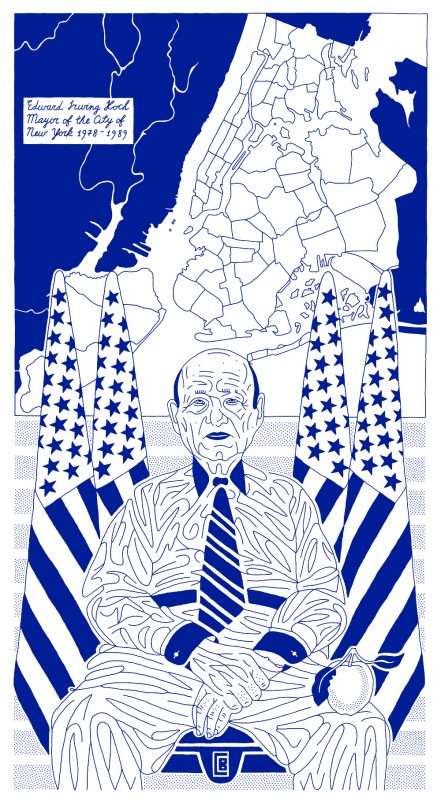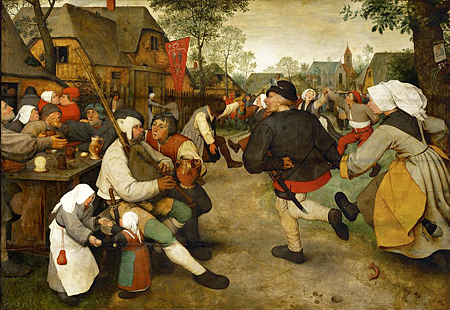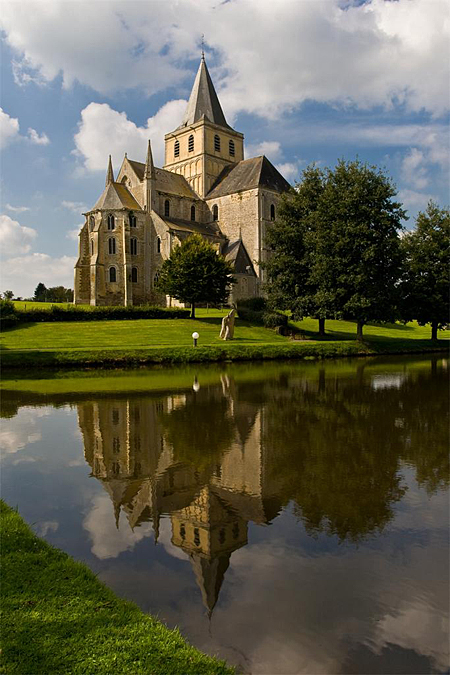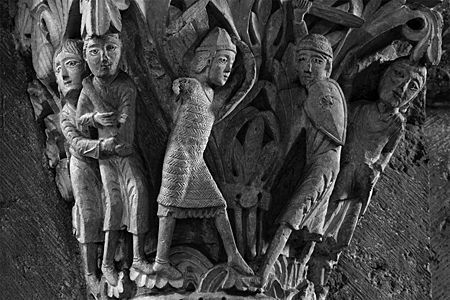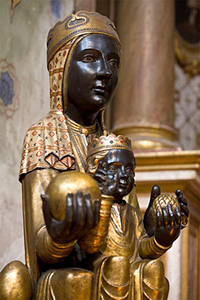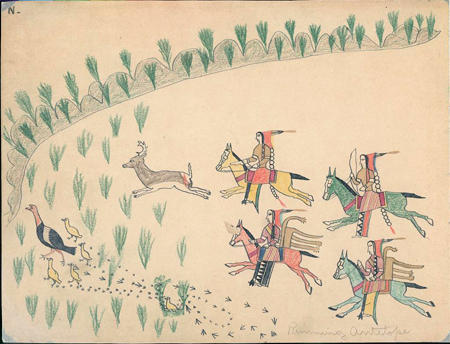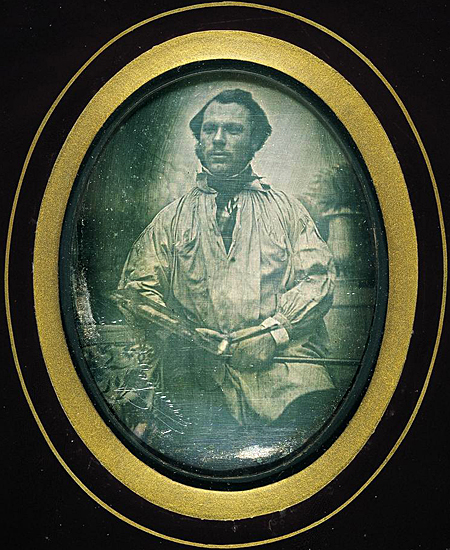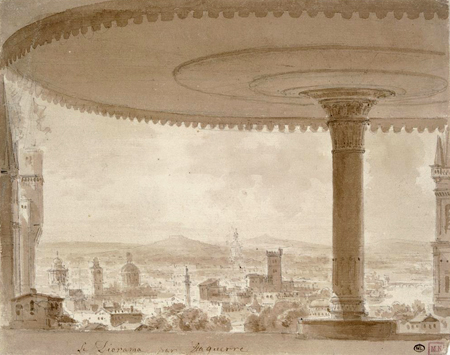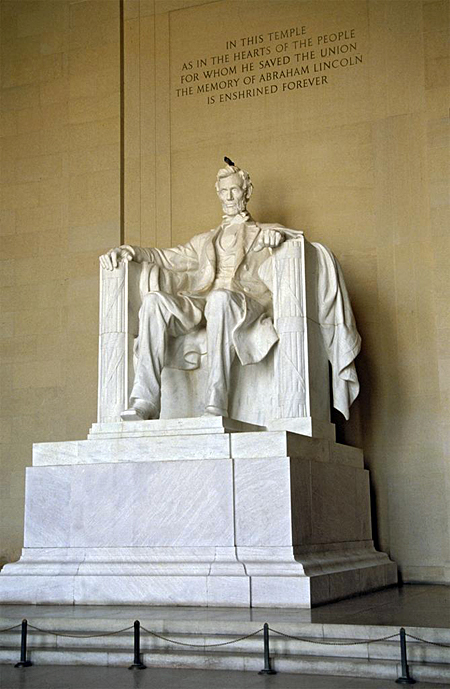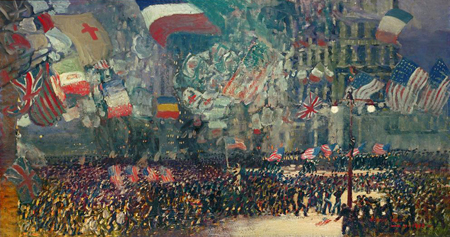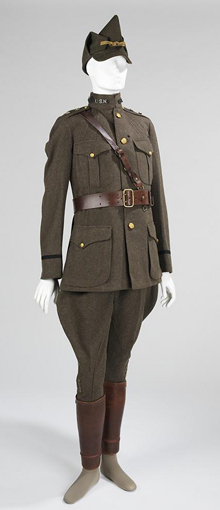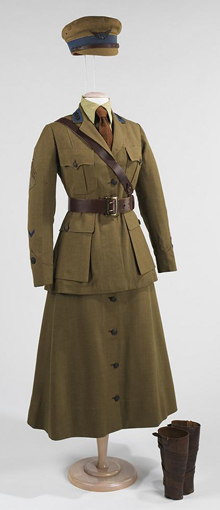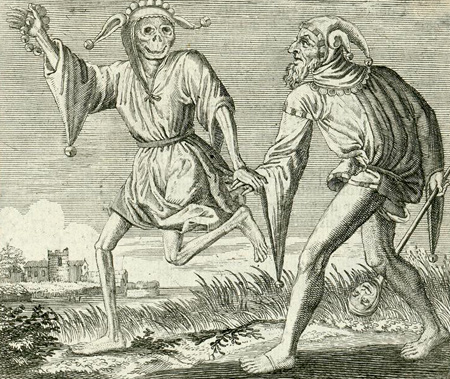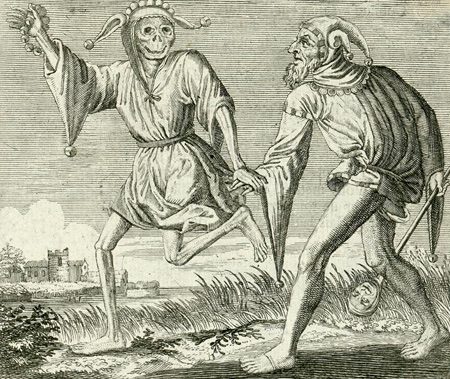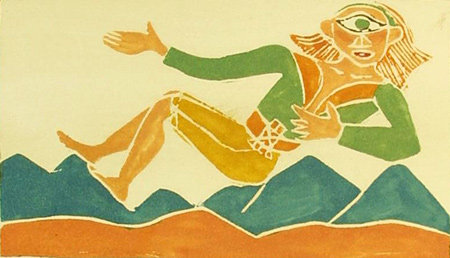
André Derain | Untitled, pg. 16, in the book Pantagruel by François Rabelais, 1943 | Fine Arts Museums of San Francisco | © 2007 Artists Rights Society (ARS), New York / ADAGP, Paris
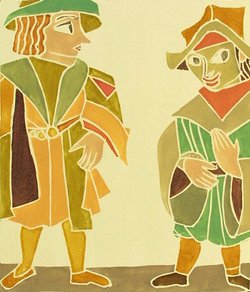
André Derain | Plaideurs, pg. 70, in the book Pantagruel by François Rabelais, 1943 | Fine Arts Museums of San Francisco | © 2007 Artists Rights Society (ARS), New York / ADAGP, Paris
The Horrible and Terrifying Deeds and Words of the Very Renowned Pantagruel King of the Dipsodes, Son of the Great Giant Gargantua (better known as simply Pantagruel) was the first in a series of five satirical books by the Franciscan monk and physician François Rabelais chronicling the outrageous adventures of the giants Gargantua and Pantagruel and friends. Published around 1532, Pantagruel is rife with vulgarity, scatological humor, and violence. In spite (or possibly because) of being condemned by the church and deemed obscene by the censors of the Sorbonne, the books proved very popular. In testimony to the author’s continuing influence, Merriam-Webster defines Rabelaisian as “marked by gross robust humor, extravagance of caricature, or bold naturalism.”
